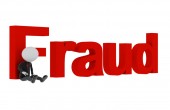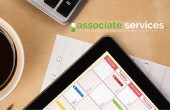Choosing the right VAT route
Article Author: Cogent Accountants Posted on: November 15, 2016 (Full Author Bio in the box on the right side) 2763 views
2763 views

There are several different ways you can account for VAT. Which VAT scheme is best for you? Choosing the right scheme is dependent on your business and circumstances. In this article, we are going to look at the Flat Rate Scheme but if you would like any further advice on any of the other options please contact us.
There are 4 different options available:
- Standard Accounting
- Annual Accounting
- Cash Accounting
- Flat Rate Scheme
As a contractor we recommend that our clients consider the Flat Rate Scheme (FRS) if appropriate. This article covers how the Flat Rate Scheme works and why it can benefit you as a contractor.
What is the Flat Rate Scheme?
The Flat Rate Scheme is an incentive scheme introduced by HMRC in 2002 as a way for small businesses to simplify their sales and purchases records. As discussed in last week’s article, VAT is a complex area of tax and can be time consuming working out what you owe to HMRC. In order to simplify this process and lessen the burden on small businesses (and HMRC’s own administrative burden), the Flat Rate Scheme was set up.
How the Flat Rate Scheme works
HMRC explain that the Flat Rate Scheme “…allows a business to apply a fixed flat rate percentage to their gross turnover to arrive at the VAT due.”
With this scheme, your company charges its customer 20% VAT on every invoice but pay over to HMRC the amount of VAT collected at a lower rate. The difference between what the company collects and what it pays to HMRC is additional income for the company.
So instead of having to calculate the VAT on the difference between sales and purchases, VAT is calculated through applying a single flat rate percentage on the gross turnover.
The flat rate percentage varies on what sector your business is in. The HMRC website has a full list of these sectors with their corresponding flat rate percentage. Typically the rate is between 12% – 14.5% (depending on the type of work you do).
Can everyone join the Flat Rate Scheme?
If you have a VAT taxable turnover of no more than £150,000 a year, then yes, you can join the scheme. You can join the scheme online or by post using form VAT600 FRS.
Benefits of the Flat Rate Scheme
- It is designed to be a simplified scheme and thus easier to understand
- Less admin burden – which is particularly useful for busy contractors who are working and also running their own businesses
- It can be helpful for cash flow as you know what percentage of your takings you will have to pay to HMRC
- If you are in your first year of VAT registration you can get a 1% reduction in your flat rate percentage until the day before your 1st anniversary of VAT registration
- You still charge your clients 20% but pay back a smaller amount to HMRC, the difference between the two is extra income for the business
Downside of the Flat Rate Scheme
- If your VAT taxable turnover is more than £150,000 per annum you can’t join the scheme or once your turnover exceeds £230,000 you have to leave the scheme.
- Once out of the scheme you cannot apply for re-entry for a full 12 months.
- If you use the Flat Rate Scheme you can’t reclaim VAT on purchases (except in certain circumstances i.e. if they are a capital asset costing more than £2,000.00 (inclusive of VAT and the full cost must be on one invoice and if the asset is still in the business on the date of registration)
Note: A capital item or fixed asset (as it is sometimes referred to) can be equipment, machinery, computers, or cars, or anything else that has a high cost and that is going to be used in the business for more than 12 months and is not intended for sale during the normal course of business.
Example of how the Flat Rate Scheme works:
You bill your client annually for £100,000, adding VAT at 20% = £120,000
You work as an IT Consultant, so your VAT Flat Rate is 14.5%
Your flat rate payment will be 14.5% of £120,000.00 = £17,400
You would be better of by £2,600.00 per year if on the FRS scheme. (In your first year of trading including the 1% discount, would be £3,800).
Things to consider
The benefits of using the Flat Rate Scheme often outstrip the downsides, however we recommend that you speak to an accountant first before committing to it.
If you do join the scheme, there are still things to consider, such as:
- You still need to show VAT of 20% on each sales invoice
- If you are business with a lot of VAT chargeable expenses, then FRS might not be for you
- You still need to complete a quarterly tax return
- Even though it is designed as a simplified scheme, you still need to keep accurate records
Latest Posts
-

Staying HMRC Compliant: VAT Returns Have Chan...
by Amanda Swales on January 29, 2020 Accounting & Tax -

Self Assessment Tax Return 101 - Filling In T...
by Amanda Swales on January 15, 2020 Accounting & Tax -

-



 IT Contractors - Profit extraction by dividend payment
IT Contractors - Profit extraction by dividend payment  How To Make The 2019-20 Tax Year The Time Of Tax Savings As A Sole Trader
How To Make The 2019-20 Tax Year The Time Of Tax Savings As A Sole Trader  Beginners guide to business tax deduction
Beginners guide to business tax deduction  Scotland Vs England And Wales: What Are The Differences In Tax?
Scotland Vs England And Wales: What Are The Differences In Tax?  Choosing the right VAT route
Choosing the right VAT route  Are you aware about the new HMRC Your 2016 Tax Report Phishing Scam?
Are you aware about the new HMRC Your 2016 Tax Report Phishing Scam?  Cloud Accountancy for Contractors: Do you find it mystifying?
Cloud Accountancy for Contractors: Do you find it mystifying?  Self Assessment Tax Return 101 - Filling In The Form Fast
Self Assessment Tax Return 101 - Filling In The Form Fast  Do I Need To Register As A Self-Employed Sole Trader?
Do I Need To Register As A Self-Employed Sole Trader?  3 Tips For Handling The Paper Tax Return Submission
3 Tips For Handling The Paper Tax Return Submission  Self Assessment Payments on Account
Self Assessment Payments on Account  Top 3 Reasons Why Freelancers and Contractors should hire an Accountant
Top 3 Reasons Why Freelancers and Contractors should hire an Accountant  The Tax Investigation Process
The Tax Investigation Process  Review bid gets crucial boost from influential and campaigning politician
Review bid gets crucial boost from influential and campaigning politician  Corporation Tax: Late Payment penalties and interest charges explained
Corporation Tax: Late Payment penalties and interest charges explained  Should an IT contractor become VAT registered
Should an IT contractor become VAT registered  HMRC Taskforces Targeting VAT Fraud
HMRC Taskforces Targeting VAT Fraud  Top Tax Tips for UK Contractors and Freelancers
Top Tax Tips for UK Contractors and Freelancers  A Guide To Tax Changes Impacting Landlords
A Guide To Tax Changes Impacting Landlords  What is a second payment on account and how is it calculated?
What is a second payment on account and how is it calculated?  How long to keep your PAYE records
How long to keep your PAYE records  PAYE Week 53 payments HMRC
PAYE Week 53 payments HMRC  Staying HMRC Compliant: VAT Returns Have Changed
Staying HMRC Compliant: VAT Returns Have Changed  Top Tax Changes That Contractors Need To Know
Top Tax Changes That Contractors Need To Know  Are You Declaring All Of Your Earnings To HMRC?
Are You Declaring All Of Your Earnings To HMRC?  Who Needs A UTR Number Anyway?
Who Needs A UTR Number Anyway?  Deadline day penalties: a subjective approach
Deadline day penalties: a subjective approach  The top 6 most common mistakes made on Self Assessment Tax Returns
The top 6 most common mistakes made on Self Assessment Tax Returns  5 reasons to update your self-assessment throughout the year
5 reasons to update your self-assessment throughout the year  Key tax dates coming up in July
Key tax dates coming up in July 

